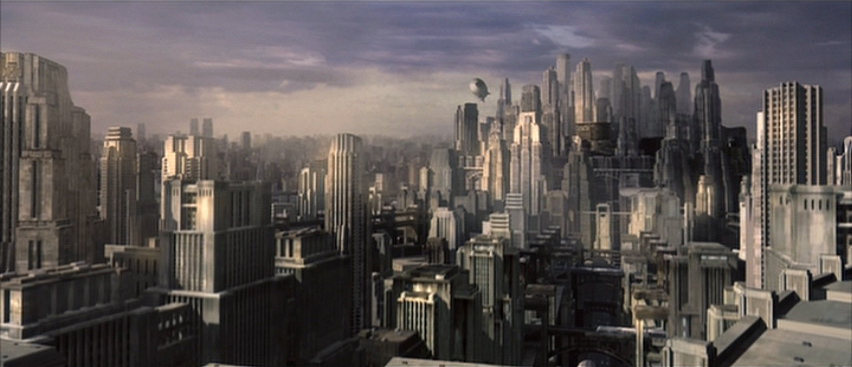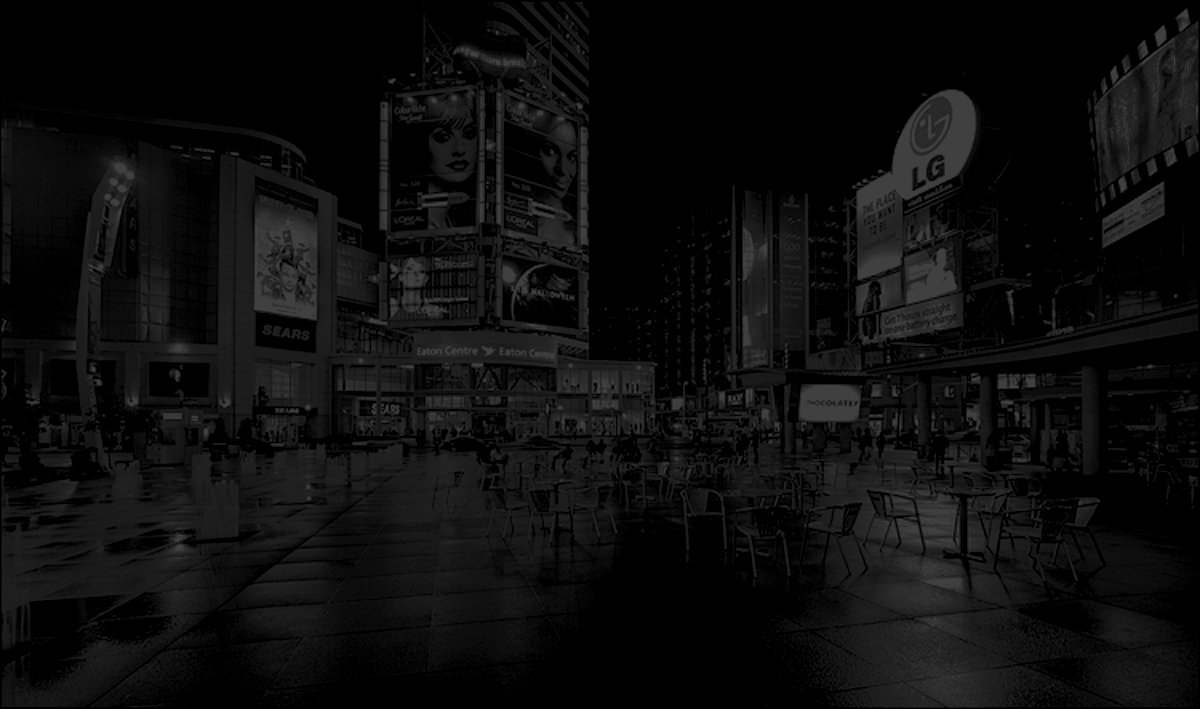

The film Equilibrium imagines a future where emotion and its expression through artistic practice are strictly forbidden, while its citizenry is kept drugged by an authoritarian and powerful state machine. Like in Brazil, the macro city in which this power is concentrated is depicted as that typical image of futuristic towers at an incomprehensible scale, while at the micro level it is given more definition and character. The film was largely filmed in Berlin, and the fascist-style architecture of several urban spaces lends the feeling of pre-war Germany or Italy. This sense of place and the mental associative images it conveys to the audience is very different than the large-scale images of the city, which make it appear very futuristic and mechanical. The urban space is clearly informed by imperial-type ideas, as evidenced in the large open plazas and gathering areas. A key role of the urban space in this film, in contrast with the others, is that the people actually gather and congregate in these public spaces. The reason they do it, or rather the reason they are allowed to do it, is to have the propaganda of the government delivered to them, whether by video screens occupying the faces of buildings, or through speeches given by their supposed Father. In both cases, the urban space is designed and occupied in order to convey the message of power and control.
The notion of urban space conveying messages is extremely prevalent in Equilibrium. The drug through which the population is controlled, Prozium, is an essential part of their lives and therefore an essential part of urban space. Buildings, which read as little more than blank surfaces that could easily be anywhere, are covered with three story tall video screens reminding the populace to take the drug. The propaganda has supplanted any architectural meaning, which now exists solely for the purpose of spreading the message of Prozium. The information contained in the signs also gives a specific image and identity to the city for the film’s viewer, which is not apparent from the view of the city from afar; the micro enriching the macro.
Another element that separates Equilibrium from the other films discussed is the depiction of an alternate form of city that exists outside the influence of the state. This underground city is comprised of subterranean spaces occupied by those whose senses have not yet been relinquished. Free from the constraints and propaganda of the controlled urban space above, these spaces convey a different message – one of personal taste and emotion, where people can leave their own mark on a space and thereby change its message. Colours, art, knicks knacks – all the things that fail to convey meaning above are given expression in the city below. In this way the lack of meaning in the government-controlled city is made all the more apparent.